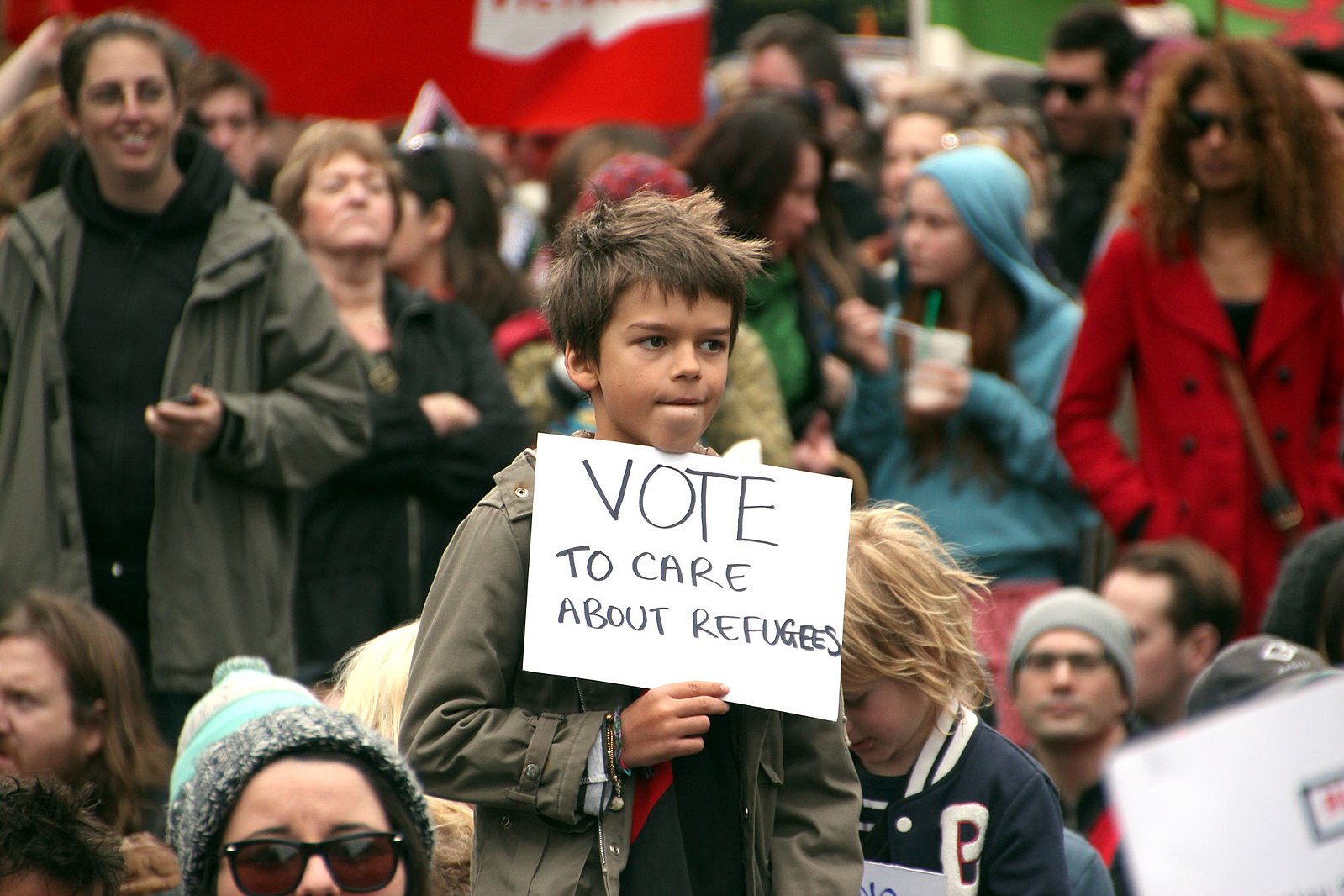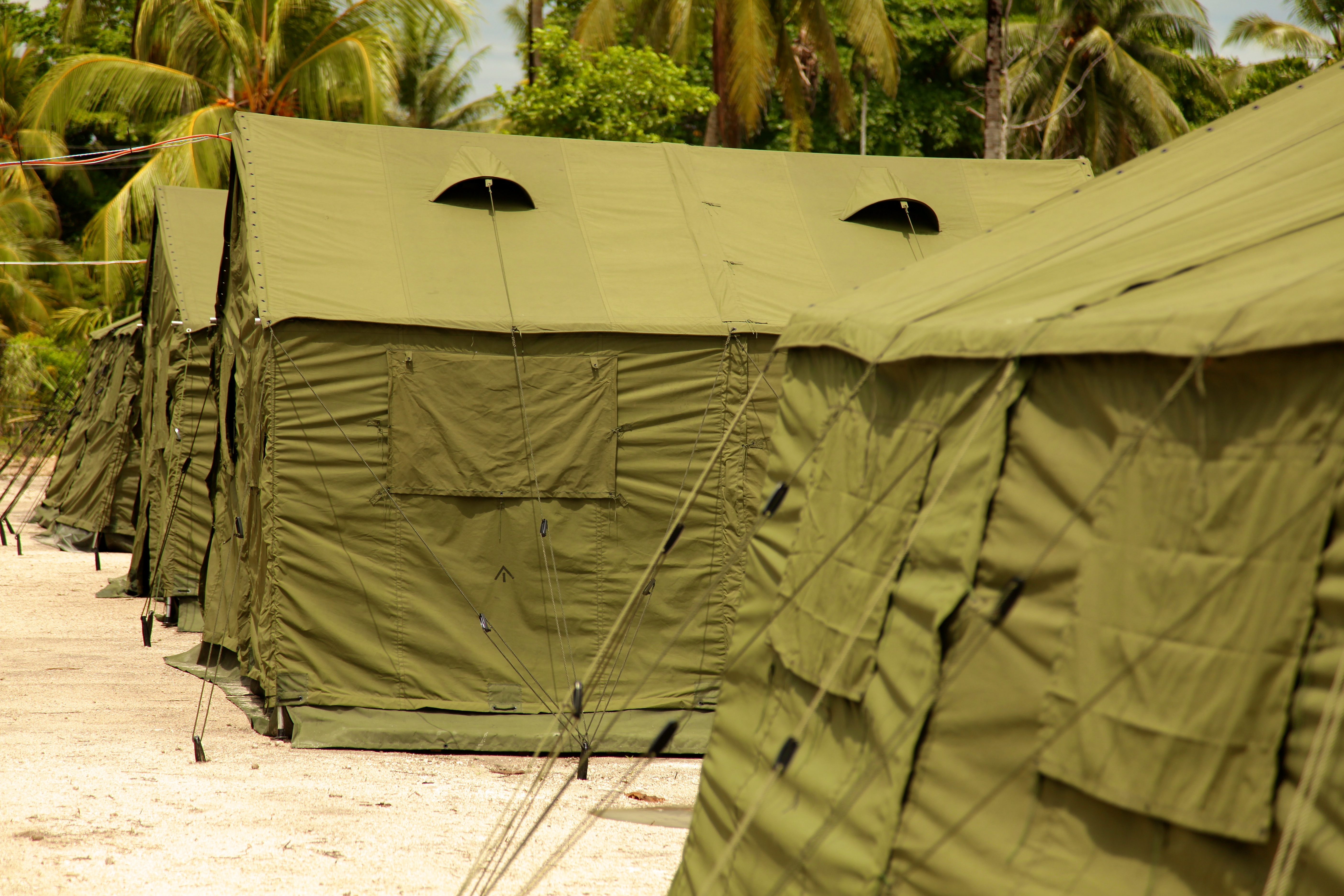
Photo: A protest in Melbourne, 2013 (Takvr)
Over the last decade, Australia has gone to disturbing lengths to ensure asylum seekers do not seek refuge in their country; most of which have been slammed around the world as inhumane. Chief amongst the dozens of critiques that Australian authorities have come under are the conditions in which asylum seekers are held in.
Keeping active, soaking in sun, getting some fresh air and socialising with other humans are the basic measures one must take to lead a healthy lifestyle both physically and mentally. However, those trapped in Australia's detention camps, unfortunately, do not have such luxury.
Firstly, not many even make it to mainland Australia. From heavy-handed Australian navy patrols to offshore detention centres, there are a range of obstacles asylum seekers face just to arrive in Australia. Once there, refugees kept in detention camps are treated appallingly; they are served maggot-infested food, trapped inside four walls with locked windows. What is worse is multiple videos have surfaced over the years depicting exactly how badly refugees are being treated. See more here and here
Heart-breaking as it is, victims fleeing their homes due to injustice or genocide are met with a heartless response from Australia that can only translate to "Don't ask us for help". Australian prime minister, Scott Morrison couldn't be clearer with his message; he even prides himself in turning back victims who have arrived in boats seeking his protection; he keeps a boat-shaped trophy on his desk that reads "I Stopped These". To add to this, the Australian government even launched an insensitive game, as a part of a campaign that is meant to deter asylum seekers fleeing from Sri Lanka. The game, which is quite sinister, presents different tragic endings that asylum seekers will meet with if they decide to flee to Australia.
It is however unsurprising if you take into consideration that the ongoing human rights issues in Australia, are deeply rooted in Australia's history. The country’s foundations are footed in driving off Aboriginal people from their traditional lands in order to build cities such as Melbourne, through methods similar to what was used by the Sri Lankan government to massacre Eelam Tamils: rape, murder and genocide.
Take, for example, Mehdi who arrived in Australia nine years ago, a fifteen-year-old refugee. He is now stuck in a state of limbo, having lost track of his days. Between ages, fifteen to twenty-four are irreplaceable, a time when you discover yourself. Mehdi, however, lost his prime years in the confinement of a detention centre. Another birthday is just another reminder for Mehdi that he is stuck in limbo with no way out.
Another man, Imran Mohammad fled the brutality in Myanmar at age 16, only to be kept in Manus Island after already being imprisoned in Malaysia and Indonesia. Mohammad taught himself English in his window-less hell, with a pen and paper that had been smuggled in; because in a detention centre it's a crime to even want to be educated. Refugees' basic rights were denied by the Australian government in an attempt again, to deter asylum seekers.
An Eelam Tamil refugee, Rajan Navanthirasa who had escaped Sri Lanka during the brutal aftermath of the genocide, although having been deemed as "in need of protection" by the Australian government was denied his basic needs even after he was diagnosed with leukaemia.
Human Rights For All director Alison Battisson describes Navanthirasa's treatment conditions: "No blankets, lights on 24 hours a day. That's where he goes to recover from chemotherapy ... Mentally, he is so damaged that his memory is destroyed". See more here.
Even once they are eventually released into society, it is made incredibly difficult for them to adapt to a normal lifestyle. Thanushan Selvarasa who had been released talked about the difficulties he faced even after release: his visa has to be renewed every six months which means he can't land a job nor can he get credits from banks as both requires a permanent visa.

Photo: Manus Island (DIAC)
As stated by the Refugee Council of Australia, the government had spent over $1.279 billion in one year. According to Amnesty International, 62% of Australians do not support this level of expenditure required to detain asylum seekers and 52% would like to see asylum seekers resettled in Australia given that their refugee status is confirmed.
At least half of Australia's population understand the grave danger the refugees are in and are keen on re-settling refugees in their country. But the current Australian government's policies hark back to its previous callous history, with its anti-refugee legislation and decisions. Indeed, in some ways, it mirrors the xenophobia and chauvinism that many refugees, including Eelam Tamils, are fleeing from. Those in Canberra must pay attention to what their citizens actually want – refugees to be treated with respect and dignity legislation that is representative of what the people of that particular nation want is imperative in improving the quality of life for those everywhere.
